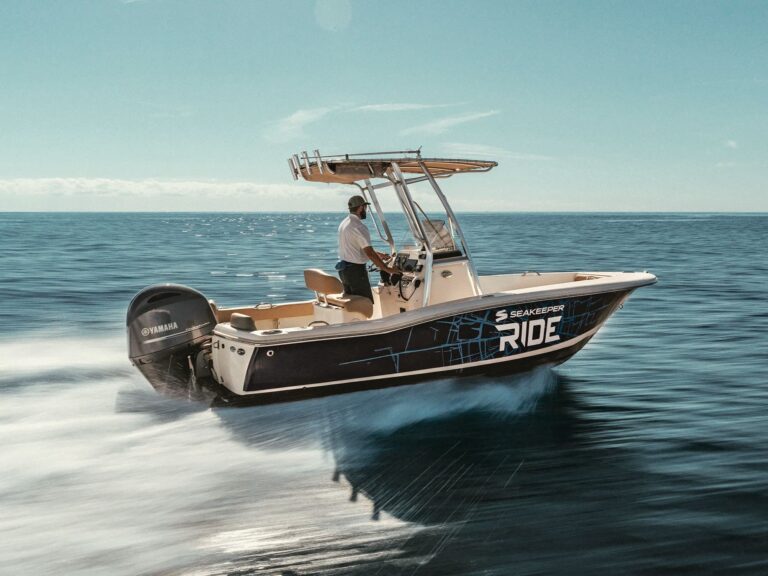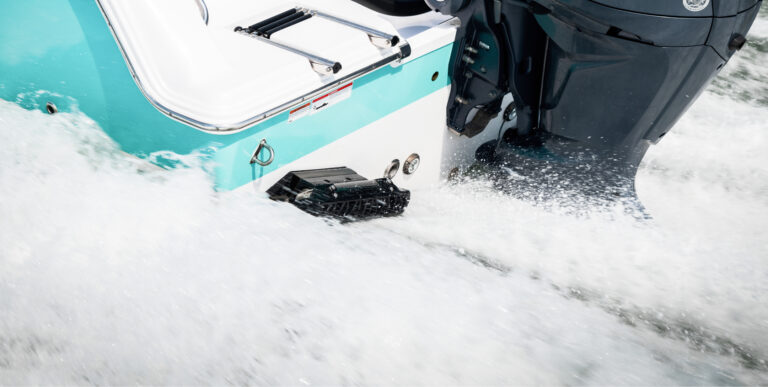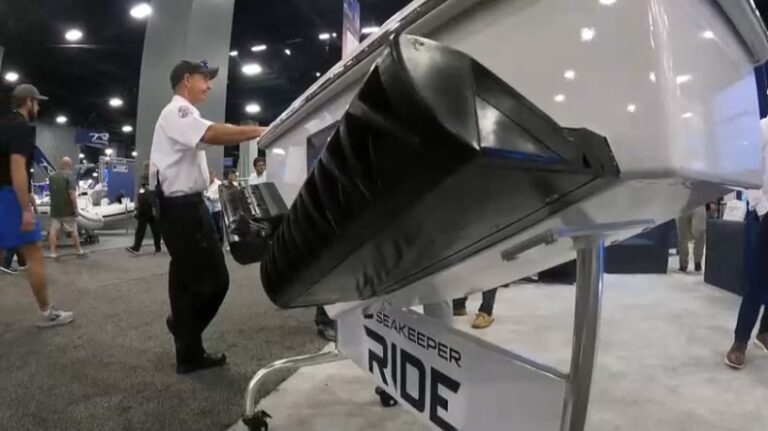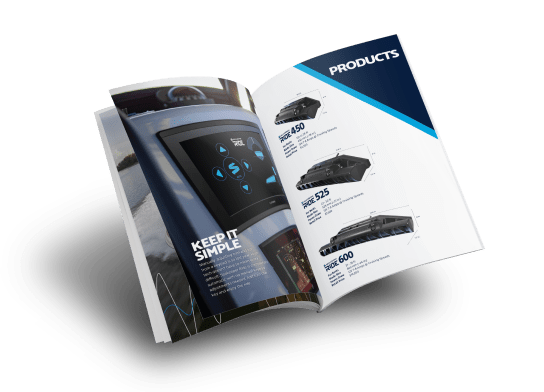Smoothing out the Seas with Seakeeper Ride
Publisher: http://www.bdoutdoors.com
Original Article: https://www.bdoutdoors.com/boating/marine-electronics/smoothing-out-the-seas-with-seakeeper-ride/
The new Ride system from Seakeeper can make a boat ride better — and how it works might be surprising.
Just about everyone’s heard about Seakeeper and their gyroscopic stabilization systems. And anyone who’s fished on a Seakeeper-equipped boat knows that these things work magic. They radically reduce rocking and rolling, and can make it feel calm even in a pitching sea. But — and this is a big but — these things are quite expensive. Seakeeper has done their honest best to bring down both system size and cost to apply to smaller and smaller boats, and today you can get them in some as small as 23’. But the smallest unit goes for $16,500 excluding the cost of installation. It also takes up valuable small-boat space, so in the real world it’s very unusual to see them on boats under 26’ and fairly unusual to see them on boats under 30’. Too bad there isn’t a less expensive, less intrusive way to get a boat’s motion under control… right?
Well, now there is. Seakeeper, which has a long-stated dedication to make boating better for everyone, not just those with blank checkbooks, introduced the Ride system late last year. And after testing it out on a small center console, we’re thinking that this company is going to once again make some serious waves in the industry.
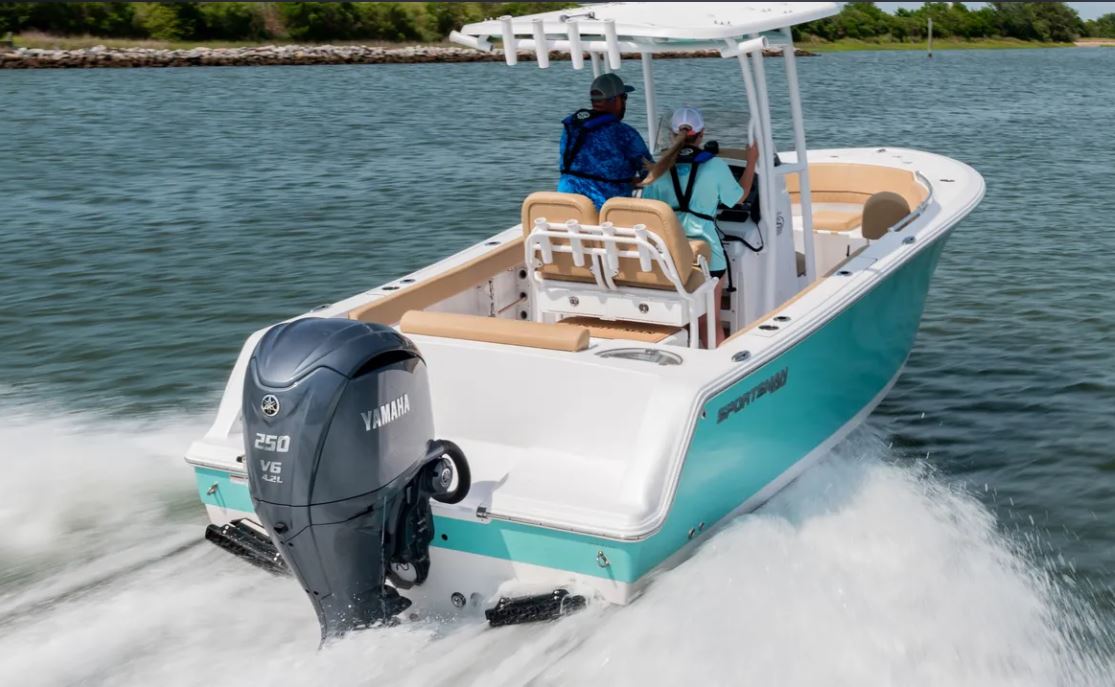
How Ride Works
Seakeeper Ride is a vessel attitude control system consisting of sensors, software, your MFD (the system is compatible with units from B&G, Furuno, Garmin, Lowrance, Raymarine, and Simrad), and a pair of rotary blades that get mounted on the transom where you’d normally find trim tabs. It’s tempting to describe the blades as being “like” tabs, but a similar positioning is where their commonalities end. They’re closer to Interceptor dynamic trim control (at least in concept) than to tabs, but still quite different. Rather than having a piston pushing the Ride’s blades up and down they have rotary actuators that can move at 300 mm (almost a foot) per second. And, they have the ability to initiate a rather amazing 100 adjustments per second.
100 adjustments per second sounds mighty fast, but those adjustments are being made as the inertial sensors make literally 10 times that number of measurements every second. Add in the software needed to crunch all that data and tell the blades when and where to move, and you can probably guess where this is all going: as the boat moves forward through the seas the system can sense its motions and move the individual blades up and down to counteract them in the blink of an eye. Actually, in a whole lot less than the blink of an eye. In a nutshell, it’s sort of like having super-duper trim tabs that are so smart and can move so fast that they can counteract changes to both running angle and list as they happen.
You get a few added bonuses with the system, too. A custom auto-trim can be set to keep the boat’s trim right where you want it, all the time. Hole shot gets a boost, and bowrise while coming onto plane will never be an issue again. And when you put the boat into a hard turn the system will automatically adjust heeling angle.
Just How Well Does Ride Work?
Once you wrap your head around how Ride works, you’ll also realize that it does have some limitations. Most notably, unlike a gyroscopic stabilization system it doesn’t have any effect whatsoever when the boat’s adrift. According to Seakeeper (and validated during our test ride) the system begins having a noticeable effect at speeds of 10 mph and over. At around 20 to 25 mph or more (different boats can react a bit differently), you enjoy the full effects. The other potential limitation is that it’s designed only for boats 35’ and under. At least, that’s the cap for now. Seakeeper says larger systems are in the works.
When we went for our sea trial it was moderately breezy, with seas around two to three feet and a chop on top of the rollers. We ran in all directions at speeds ranging from the low 20s to the mid-30s, turning the system on and off from time to time as different people took the wheel so each could get a feel for running the boat with and without Ride active. And there was a huge difference between when the system was on versus off. When it was turned off we experienced the usual: hold on tight, and use your legs for shock-absorbers. But when it was turned on, it felt like the boat’s movement was magically reduced to the tune of 50 or so percent. Grips on the pipework were relaxed and standing was far easier. It even got to the point where another passenger and I commiserated and hoped it wouldn’t last for too long, when the captain shut the system off while turning the wheel over to a new driver.
According to the company the exact pitch and roll reductions you’ll experience will vary a bit from boat to boat and sea condition to sea condition. That said, our feeling that it was a reduction of around 50-percent falls right into line with Seakeepers own estimates, as they say the system will mitigate motion by 45 to 70 percent.
When Will You Ride a Ride
The Ride system isn’t yet available on an aftermarket basis, so you can’t run right out and install one on your boat. That day will come, and Seakeeper says installation will be DIY easy. But for now it’s only available on their product launch partners, Chris-Craft, Scout, and Sportsman boats. Seakeeper told us during the demo that they expect this list to expand rapidly and extensively, but for the purposes of initially introducing Ride to the world they kept their attention focused and narrow with these select brands.
We can’t predict if Seakeeper Ride will take the world by storm, nor can we say when you’ll be able to buy a system for a boat you already own. What we can say is that it’s substantially less expensive than a gyro. MSRP pricing is set to start at $4,500 for a system designed for 19’ to 26’ boats. And it will make one heck of a difference in comfort levels aboard your boat. In fact, if you turn the system off while running it’s a fair bet that everyone aboard will start whining — I know I did.
